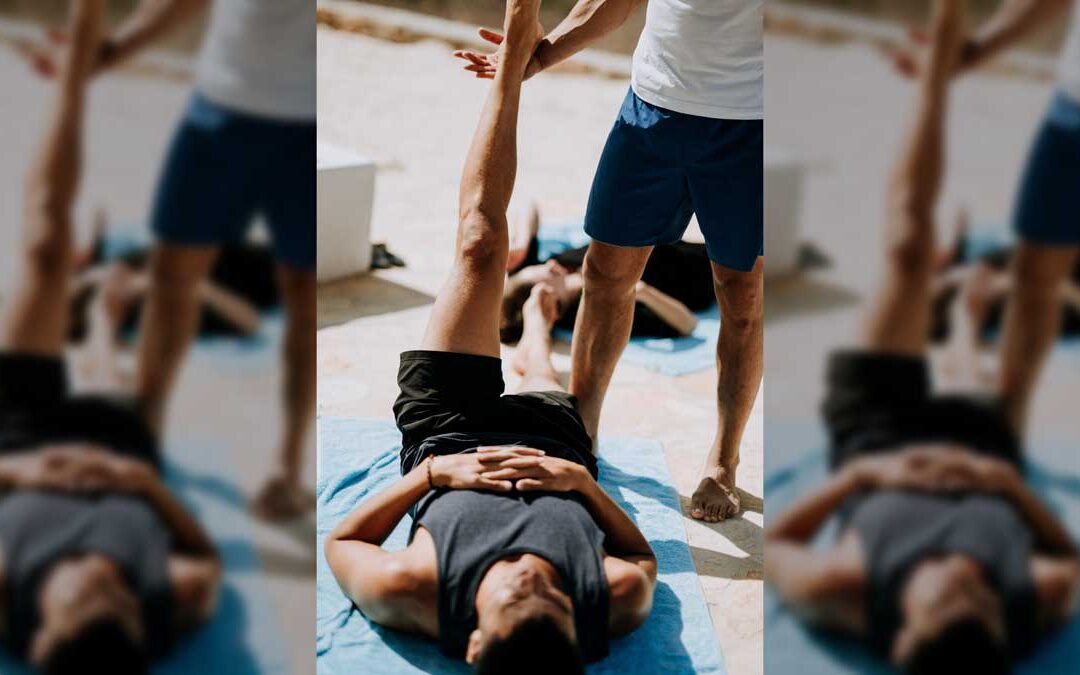I was honored last week to speak on Adam Keen’s Yoga and Mental Health panel with many esteemed colleagues including Eddie Stern, Shanna Small, and Gregor Maehle. Each of us were asked to speak on a specific topic. The question I was asked to address was the role of touch in yoga and if it could be therapeutic. Below are some of my thoughts on this very sensitive topic. As you will see I decided to focus not directly on that question but on the topic of touch and boundaries and their origin to give folks more of a context and the information they can use to make their own decision.
Where does our sense of boundaries come from?
Our first sense in the embryo is the sense of touch. It begins at our nose tip and grows throughout our largest organ, our skin. Soon we begin to move around inside the womb. It’s there that we first discover the sense of what is me and what is outside of me. Later, when we are little and begin to crawl, we experiment with boundaries by moving away from and back to our primary attachment figure, a figure so important to our development.
The primary attachment figure provides us with essential eye contact, appropriate reactions, and… you know it… touch. Touch is so necessary that we can not grow or heal without it. With it, our colds go away faster and we are generally happier. During the conference, I shared my personal stories of experiencing touch deprivation during my first year of college and again during the pandemic. What can I say… I’m a hugger!
Touch is wonderful and necessary, however, there are some real questions as to whether it can be totally consensual in a yoga classroom setting where it’s hard to argue that there isn’t some power imbalance, no matter what the teacher does to try to even that out, and a desire on the student’s part to please their instructor. Also, when it comes to the powerful physical adjustments often associated with Ashtanga Yoga, they are clearly designed to push us past our body’s natural and necessary boundaries which is problematic, especially from a trauma sensitivity framework.
Trauma survivors, in particular, have many issues around safe boundaries since those were often violated during the traumatic event or events. In addition, the trauma response inhibits the prefrontal cortex which is the part of the brain that regulates our social relationships, signaling what is appropriate and inappropriate. The fogging of this part of the brain can cause survivors to have very leaky and confusing boundaries. This is further magnified by the very frequent trauma response instinct to try to recreate the conditions of the traumatic event in order to respond to them differently. This, in addition to a common trauma survivor feeling that one’s life isn’t really theirs (disassociation), leads to unskillful boundaries and unnecessary risks.
Awareness of this phenomenon and the fact that almost everyone who walks into a yoga room is likely dealing with some kind of trauma or traumatic stress should make yoga teachers more, not less respectful of their student’s boundaries. Instead of pushing yoga practitioners past them with intense adjustments such as the ones we commonly see in the Ashtanga Yoga practice, instructors should validate, support, and celebrate boundaries and encourage their students to work at their edge and even back away from that edge to self-regulate as necessary. As Eddie Stern mentioned in his comments following my observations, a simple touch on the shoulder or hand on the back is enough to move prana and signal support. This is the kind of touch we should be considering as we hold space for our yoga students.
The subject of trauma sensitivity in yoga has been at the core of my work for the last twenty years and is summarized in my forthcoming book, The


Recent Comments